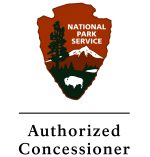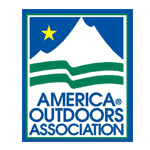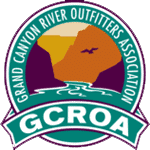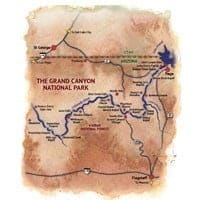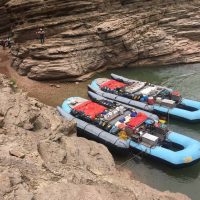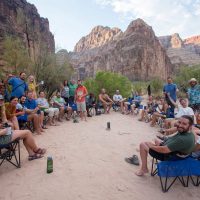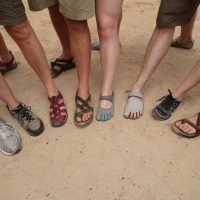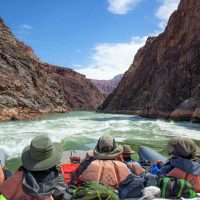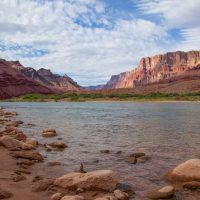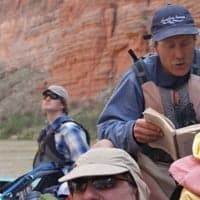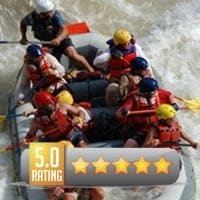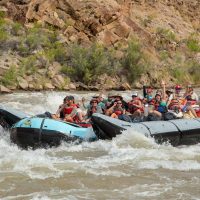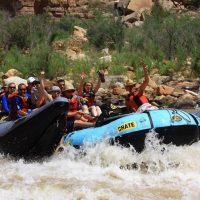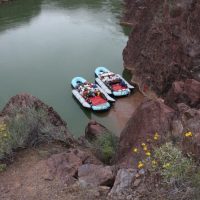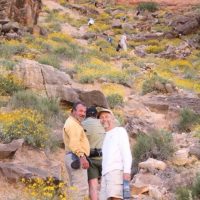Grand Canyon Rafting Trips
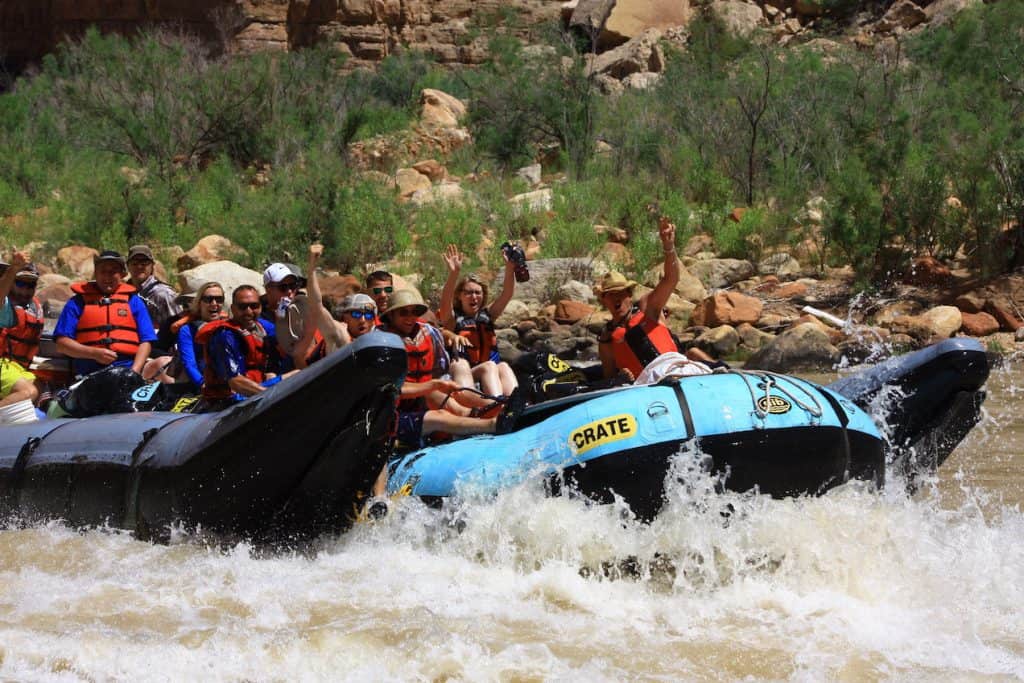
Grand Canyon River Trips
Why Choose CRATE?
- Under Original Ownership Since 1971
- 5 Star Rated Rafting Trips
- We Provide Everything You Need For a Great Rafting Trip
Book Your Adventure Today!
(800) 253-7328
Home » Grand Canyon Rafting Trips
Grand Canyon Rafting on the Colorado River
Many Consider Rafting the Grand Canyon the Best Vacation in the World
Rafting the Colorado River through the Grand Canyon is the best-known whitewater rafting expedition in the world. For nearly 300 miles the river flows freely through a mile-deep gorge of ever-changing views and vistas, revealing the history of the earth in its multicolored layers of rock. The rapids are legendary, ranging from playful riffles to white knuckle thrills. Side canyon hiking and off-river exploration will take you to places of wonder, where you can frolic in waterfalls, swim in turquoise pools, stand amazed upon scenic overlooks, or relish the cooling shade of slot canyons and hidden grottoes.
Experience World-Class Whitewater Rafting with Colorado River & Trail Expeditions
Colorado River and Trail Expeditions is family and veteran owned. Our founders David and Vicki Mackay met on a Grand Canyon trip in 1968. Together they started Colorado River & Trail Expeditions(CRATE) in 1971. It is fair to say that the Colorado River and Grand Canyon run in our souls. When the company first started we did backpacking as well as river running. In fact on some of our early rafting expeditions we would spend one night off of the river backpacking to one of the Grand Canyon’s wonders. We don’t do guided backpacking anymore, or spend nights off of the river, but we still believe that hiking off river is an important part of any Grand Canyon rafting trip. Thus we decided to keep “Trail” as part of our name.
Your Adventure, Your Way: Personalized Grand Canyon Rafting
Technically we are the smallest outfitter in Grand Canyon. Where we operate approximately 20 trips per year. Because we are relatively small we offer a more personalized experience to our customers. From the moment you call our office to the warmth and expertise of our guides, you’ll immediately notice the difference. We’re committed to providing a personalized, friendly experience every step of the way.
Smaller Groups, Bigger Adventures
At CRATE we believe in not overcrowding our trips. Our Grand Canyon rafting trips have smaller group sizes than most of our competitor’s trips.
Expert River Guides Who Bring the Canyon to Life
Our guides work extremely hard, love what they do, and they are experts in their field. Most of them have worked for CRATE for over a decade and some much longer. They are not only highly skilled boatman, but also knowledgeable in the history, geology, and ecology of the Grand Canyon and Colorado River. This expertise allows CRATE guides to provide a rich, educational experience alongside the thrill of Grand Canyon whitewater rafting.
Our Rafting Reputation
CRATE has built a longstanding reputation for delivering high-quality, unforgettable rafting experiences. Our decades of experience have allowed us to continually improve and adapt our trips. We have a loyal customer base that frequently returns for additional trips and often recommends us to others. Our high number of repeat customers speaks volumes about our Grand Canyon rafting trip’s quality of service and attention to detail.
Grand Canyon Whitewater Rafting Trip Options
We offer trips through the entire Grand Canyon from Lees Ferry to Pearce Ferry. We also offer trips that start/leave the Grand Canyon at Whitmore Wash via Helicopter. Some of our rafting trips have an option to start or end at Phantom Ranch via hiking in/out of the Grand Canyon. CRATE offers motorized, rowing, paddle, and kayak support rafting tours.
Our river tours on the Colorado River in Grand Canyon range from 3-14 days in length. It takes a minimum of 8 days to raft the entire Grand Canyon. Our shortest trip is our 3-day Grand Canyon Ranch and Raft Adventure trip which is all inclusive from Las Vegas.
Choose from a variety of trip options tailored to your schedule and preferences:
- Full Canyon Expedition (8-14 Days): Raft all 277 miles of the Colorado River through the Grand Canyon, exploring iconic rapids and side canyons.
- Helicopter-Take-Out at Whitmore Wash (6-11 Days): Raft the first 188 miles of the Colorado River in Grand Canyon.
- Upper and Lower Hike-In/Out Trips: Start or end your adventure at Phantom Ranch, combining thrilling rafting with a strenuous and beautiful hike in or out of the Grand Canyon.
- Grand Canyon Rafting and Ranch Combination Trips: Experience the ultimate combination of whitewater rafting and western hospitality, as your all-inclusive journey takes you from Las Vegas to the Bar 10 Ranch, and then down the Colorado River in the Grand Canyon, complete with meals, accommodations, and expert guides.
- Motor, Row, or Paddle: Opt for motorized rafts for efficient travel, or embrace the timeless adventure of oar-powered boats and paddle rafts for a more hands-on, traditional experience.
Colorado River and Trail Expeditions takes pride in running the best rafting trips in the Grand Canyon, but you don’t have to take our word for it! Check out these travel blogs written by past customers:
Grand Canyon Motorized Rafting Trip–RCQuinn.com(A travelblog about what it is like to raft the Grand Canyon on one of our motorized rafting expeditions)
The Best Rafting Company in the Grand Canyon-of Whiskey and Words Travel Blog(Description of a paddle rafting trip through the Grand Canyon)
Raft the Entire Grand Canyon
Lees Ferry to Pearce Ferry – 280 Miles
Lees Ferry to Whitmore Wash – 190 Miles
Lees Ferry to Phantom Ranch – 88 Miles
Phantom Ranch to Pearce Ferry – 192 Miles
Phantom Ranch to Whitmore Wash – 100 Miles
Whitmore Wash to Pearce Ferry – 90 Miles
The Ultimate Guide to Grand Canyon Rafting: Everything You Need to Know
By Walker Mackay
For me it was fate. I was lucky enough to have been born into a rafting business. My Dad (David Mackay) was a gym rat after returning home from Vietnam, and one of the guys he played handball with was Jack Currey. Jack had recently started a river running company and was actively looking for guides. My Dad took him up on his offer to go see what the river was about, and after rafting through the Grand Canyon my Dad didn’t wanted to do anything else.
He started working for Jack in 1965. And met my Mom (Vicki) on a Grand Canyon river trip in 1968. She worked at the Los Angeles airport and had noticed an ad hung up in the airport about the opportunity to raft the Colorado River. She immediately talked to her friend and decided that if they did the trip they would definitely reach one of their lifelong goals as 21 year olds to make the Los Angeles Airport Newsletter. For their trip they decided to hike in at Phantom Ranch. The trip was composed of boy scouts and them. And as my fate would have it my Dad was a boatman on the trip.
My Dad continued to work for Jack until 1971. At that point in time Grand Canyon National Park decided they were going to stop issuing commercial river permits for the Colorado River in Grand Canyon. My Mom and Dad were fortunate enough to get one of the last commercial permits given out by Grand Canyon. They started Colorado River & Trail Expeditions(CRATE) and did their best to build up use, as the permits were issued based on the number of passengers each company took down in 1971. In the 1970s we had an average size permit in Grand Canyon. Today we are the smallest outfitter in Grand Canyon because every company smaller than us has been bought by someone bigger.
I was born in 1976, did a 21 day river trip on the Noatak River of Alaska at age 2, and did my first Grand Canyon raft trip in 1985. I grew up in the river business and started guiding trips in 1995. My wife and I got married on the rim of the Grand Canyon with the river below in 2003, and formed a dynamic team running trips together for 8 years before having kids. Today I have accumulated somewhere around 150 trips through the Grand Canyon with another 100 trips on others sections of river. Most of those trips are on motorized rafts, but I also have ran dories, oar boats, paddle rafts, kayaks, inflatable kayaks, and river boards through the rapids of Grand Canyon. I love the place and feel incredibly lucky to have been born as a river guide. CRATE is a family and veteran owned business with my Dad, Mom, Sister, Wife, and I all playing a part in its success on a daily basis.
8-Reasons the Grand Canyon is the most sought-after rafting destination in the world:
The Geology
- Unparalleled Rock Layers: The Grand Canyon exposes nearly two billion years of Earth’s history through its stunning stratified rock formations. No other place allows rafters to see such a complete and dramatic geological story in action.
The Rapids
- Thrilling Challenges: The Colorado River features some of the most famous and exciting rapids in the world, such as Lava Falls, Crystal, and Hermit.
- Unique Rapids Grading System: Unlike the traditional international Class I-V scale, Grand Canyon rapids are rated from 1 to 10, creating a unique allure for rafters.
Scenic Grandeur
- Immense Scale: The sheer size of the canyon—277 miles long, up to 18 miles wide, and over a mile deep—creates an experience unlike any other.
- Breathtaking Vistas: Towering cliffs, hidden waterfalls, and surreal colors at sunrise and sunset add to the magic of the journey.
- Side Canyons and Features: Stunning locations like Elves Chasm, Havasu Canyon, and Deer Creek Falls provide incredible opportunities for exploration.
Wilderness Adventure
- Isolation: Once you’re on the river, you’re truly disconnected from the outside world, offering a rare opportunity for solitude and immersion in nature.
- Starry Skies: Few places rival the Grand Canyon for stargazing. Spending nights beneath the Milky Way in such a remote setting is unforgettable.
Indigenous Peoples
- Cultural History: The Grand Canyon is not only a natural wonder but also a sacred place deeply intertwined with the histories, cultures, and identities of the Indigenous peoples who have called it home for thousands of years. Tribes such as the Havasupai, Hopi, Navajo, Paiute, Zuni, and Hualapai, among others, hold profound spiritual connections to the canyon, viewing it as a place of origin, a source of life, and a bridge to their ancestors. The intricate petroglyphs, ancient dwellings, and trails that weave through the canyon are testaments to their enduring presence and deep understanding of this land. For these communities, the Grand Canyon is more than breathtaking vistas; it is a living, sacred entity imbued with stories, lessons, and meaning. As stewards of the canyon, they remind us of the importance of respect, sustainability, and harmony with the natural world, offering invaluable perspectives that enrich the experience of all who visit this extraordinary place.
A Journey Through Time
- Dynamic Landscapes: The river constantly changes, with seasonal flow variations related to the operation of Glen Canyon Dam changing the character of individual rapids.
- Living Geology: The Grand Canyon’s evolving landscape, such as new rapids forming after flash floods, is a testament to nature’s power in action.
The Bonding Experience
- Community on the River: Sharing this adventure with others—whether friends, family, or strangers—creates deep, lasting connections.
- Guide Expertise: Experienced guides bring the trip to life with their knowledge of geology, history, and folklore, making the journey even more enriching.
Accessibility for All Types of Adventurers
- Diverse Trip Options: From motorized rafting for quicker trips to oar-powered journeys for those seeking a traditional experience, the Grand Canyon has something for everyone.
- Flexible Durations: Trips range from 3 days to over 2 weeks, accommodating all schedules and levels of commitment.
Once-in-a-Lifetime Adventure
- A Bucket-List Destination: The Grand Canyon is a UNESCO World Heritage Site and one of the Seven Natural Wonders of the World, making it a top priority for adventurers worldwide.
- Life-Changing Perspective: Many rafters leave the Grand Canyon transformed, inspired by its beauty, power, and serenity.
The Grand Canyon Rafting Experience
A Day in the Life of a Grand Canyon Rafting Trip
The Grand Canyon is a place of breathtaking beauty and endless wonder, where every moment feels alive with possibility. A day on the river is a whirlwind of adventure, from sunrise to starry night, with awe-inspiring sights and experiences that pass by in a flash.
Each morning begins with the soft light of dawn painting the canyon walls and the soothing sounds of the Colorado River setting the tone for the day ahead. As I prepare coffee and watch the world come alive, I’m reminded of the magic this place holds.
To wake up my fellow rafters, I call out a loud and cheerful “Coffee Call!” Everyone comes down, washes their hands, and grabs a cup of coffee, hot chocolate, or tea before heading back to their camp to start packing up their cots and sleeping bags. About half an hour later, a hot, healthy, and filling breakfast is ready.
After breakfast, my river crew and I tear down the kitchen and load it back onto the rafts while the group finishes packing their sleep gear. Guests bring their dry bags and camping items back to the boats, and once the bathrooms are packed away, we’re ready to head downriver.
Each river day is unique. Typically, we’ll start with a morning hike, stop for lunch at a scenic spot, and fit in another hike in the afternoon before finding a place to camp for the night. Hikes range from short walks to stunning waterfalls to longer, more challenging treks that reward us with breathtaking views of the canyon. Hikes are always optional. Some guests jump at every chance to explore, while others prefer to relax in the shade, read a book, or take photographs of the incredible scenery.
Time on the river is equally varied. On some stretches, we float quietly, letting the sounds of the canyon surround us. Other times, the guides will read a passage from a book or poem, adding to the sense of wonder. On certain days, we’re focused on covering miles, navigating thrilling rapids, and making progress downstream.
As the shadows of the canyon walls begin to overtake the beaches, we arrive at camp, ready for the next adventure the evening has in store. There’s a shared energy as everyone helps unload the rafts and set up the kitchen, a rhythm that quickly becomes second nature. While camp comes together, my crew puts out hors d’oeuvres, and the delicious aromas of dinner begin to fill the air.
As night falls, real friendships take root, and laughter echoes through the canyon. When it’s time to sleep, we drift off under a canopy of stars, more vivid and expansive than most have ever seen. Before we know it, the first signs of dawn appear, and the sound and smell of coffee signal the start of another unforgettable day.
The Magic of the Colorado River
The Colorado River in the Grand Canyon has a magic about it. It carves through the earth’s history, revealing layers of time and shaping landscapes that leave you in awe. Its waters are a lifeline, bringing vibrancy to the desert and sustaining countless species. But its magic goes beyond the physical—it brings out the best in people. The river fosters connection: between families, individuals, nature, and oneself. Maybe that’s why so many people fall in love on a river trip, swept up in the shared adventure, the beauty of the canyon, and the rhythm of life on the water. Whether it’s the roar of rapids that stirs your adrenaline, the stillness of a secluded eddy that invites reflection, or the camaraderie built around a campfire under a star-filled sky, the Colorado River offers moments that stay with you forever. It’s a reminder of nature’s power, resilience, and beauty, and of our small yet profound place within it.
Types of Grand Canyon Rafting Trips
Type of Rafting Trip | Description |
Motorized | Rafts are powered by motors, allowing for faster travel and covering more distance. |
Oar-Powered | Guides use oars to navigate the raft, offering a more immersive, slower-paced experience. |
Paddle | Passengers paddle alongside the guide, making it a more physically engaging trip. |
Hybrid (Motorized/Oar/Paddle) | A combination of motorized and Oar/Paddle, or a combination of Oar/Paddle rafts. Give more options to stay as active as you want, instead of always having to Paddle. |
Sections of the Colorado River in Grand Canyon
River Section | River Miles | Typical Trip Length | Hike or Helicopter In/Out |
Lees Ferry to Pearce Ferry | 280miles | 8 to 16 days | No hike or helicopter required |
Lees Ferry to Diamond Creek | 225 miles | 8 to 14 days | No hike or helicopter required |
Lees Ferry to Whitmore Wash | 188 miles | 6 to 12 days | Requires Helicopter Take-out |
Lees Ferry to Phantom Ranch | 88 miles | 4 to 6 days | Requires hike out (South Kaibab Trail or Bright Angel Trail). |
Phantom Ranch to Pearce Ferry | 192 miles | 6 to 11 days | Requires hike in (Bright Angel or South Kaibab Trail). |
Phantom Ranch to Diamond Creek | 137 miles | 7 to 10 days | Requires hike in (Bright Angel or South Kaibab Trail). |
Phantom Ranch to Whitmore Wash | 100 miles | 4 to 6 days | Requires hike in (South Kaibab Trail or Bright Angel Trail). |
Whitmore Wash to Pearce Ferry | 92 miles | 2 to 5 days | Requires helicopter ride from the Bar 10 Ranch to put in at Whitmore Wash |
As a longtime river guide in Grand Canyon with Colorado River and Trail Expeditions. We operate all of these sections of river in all types of boats. Here are my opinions on common questions I often receive.
Which trip will I raft through the entire Grand Canyon?
The Lees Ferry to Pearce Ferry trip is the ideal option if you have the time to experience the entire Grand Canyon. It offers a complete, immersive journey through the canyon’s diverse and breathtaking landscapes.
What’s the difference between a “full canyon” trip (Lees Ferry to Pearce Ferry) and a “partial canyon” trip (e.g., Lees Ferry to Phantom Ranch)?
A “Full Canyon” trip covers the entire length of the Grand Canyon, providing a comprehensive experience from start to finish. A “Partial Canyon” trip, such as Lees Ferry to Phantom Ranch, covers only a section of the canyon and typically requires hiking or helicopter transport in or out of the Grand Canyon.
Do you recommend hiking in or out at Phantom Ranch, or would a helicopter take-out be better for some people?
Hiking in or out at Phantom Ranch can be extremely strenuous due to the steep gradients and long distances involved. If you plan to attempt the hike, proper training is essential to ensure you are physically prepared. For many, the helicopter option is a more practical and less demanding alternative, offering a convenient and scenic exit from Whitmore Wash. Helicoptering in or out at Phantom Ranch in not allowed.
What’s the best section of the river for someone looking for a more relaxed experience without a lot of intense rapids?
The section below Whitmore Wash offers a more relaxed experience with fewer intense rapids than the areas above Whitmore Wash. The most challenging rapids are found between Phantom Ranch and Whitmore Wash, making this southern section ideal for those seeking a less intense rafting experience.
What’s the difference between a motorized rafting trip and a paddle raft trip in terms of the experience and the level of physical effort required?
Paddle raft trips require continuous physical participation, as everyone on board plays an active role in navigating the raft, especially through the flatter sections of the river. In contrast, motorized and oar-powered trips do not require as much active participation during the river portion, but they still offer plenty of opportunities for adventure through hiking and off-river excursions.
Is it better to do the helicopter take-out at Whitmore Wash or to extend the trip to Pearce Ferry?
Both the helicopter take-out at Whitmore Wash and the extended trip to Pearce Ferry provide distinct experiences. The helicopter offers a thrilling and efficient exit, shortening the trip by about a day, but covering all the biggest rapids and best side canyon hikes. However, for those who have not yet rafted the entire Grand Canyon, continuing to Pearce Ferry is the preferred option. Extending the trip allows you to fully experience the canyon’s grandeur, landscapes, and rapids, providing a more complete and rewarding adventure.
Do you recommend a longer trip (e.g., Lees Ferry to Pearce Ferry) or a shorter trip (e.g., Whitmore Wash to Pearce Ferry) for a first-time river runner?
For first-time river runners, the all-inclusive Grand Canyon Ranch and Raft trip offers a fantastic introduction to rafting in the canyon. However, if you’re looking for a more spectacular experience, the full canyon trip from Lees Ferry to Pearce Ferry is the ultimate choice, providing an unforgettable adventure through the entire Grand Canyon.
The Rapids of The Colorado River in Grand Canyon
The rapids of the Grand Canyon are dynamic features shaped by a combination of geology, hydrology, and human influence. They form primarily at the mouths of side canyons, where flash floods deposit debris such as boulders, sediment, and rocks into the Colorado River, creating natural obstructions. These debris fans act as “low-head dams,” and the steep drop in river elevation combined with the river’s flow over the debris creates the turbulence and waves characteristic of rapids. The largest rapids are often found in the Inner Gorge, where erosion-resistant metamorphic and igneous rocks, like Vishnu Schist and Zoroaster Granite, steepen the gradient. However, major rapids like Lava Falls can also occur outside the Inner Gorge, where tall debris fans, such as those at the mouth of Prospect Canyon, dominate the river’s flow.
The construction of Glen Canyon Dam has profoundly affected the Colorado River’s flow, altering the natural processes that once helped shape and maintain the rapids. Before the dam, large spring floods would periodically flush debris downstream, redistributing material and shaping rapids. Today, regulated flows are more consistent, with daily fluctuations tied to hydroelectric power demand. These controlled flows tend to average around 10,000 cfs, which reduces the river’s capacity to clear debris from flash floods. As a result, some rapids are becoming progressively more technical and difficult to navigate at low flows, while others develop larger waves at higher flows, such as those closer to 20,000 cfs.
Overall, the rapids of the Grand Canyon are a constantly evolving interplay of natural forces and human intervention. The combination of debris flows from flash floods, the geology of the canyon, and the regulated flow of the Colorado River creates a diverse and ever-changing set of rapids. From the calm riffles to the roaring whitewater of Lava Falls, the Grand Canyon’s rapids remain a defining feature of the river, offering a blend of challenge, beauty, and dynamic river science for those who navigate its waters.
In the Grand Canyon, rapids are rated on a unique 1–10 scale, which differs from the International Scale of River Difficulty (Class I–VI). The Grand Canyon scale provides a more detailed assessment of rapids within the canyon, accounting for variations in flow and the specific challenges of each rapid. For comparison, most rapids in the Grand Canyon would correspond to Class III on the International Scale, as they typically have clear recovery zones below the rapid where boaters can regain control after navigating the turbulence. However, some of the more challenging rapids, such as Lava Falls and Crystal Rapid, push the upper limits of the Grand Canyon scale, reaching 9 or 10, and might align with Class IV. This dual rating system highlights both the technical aspects of individual rapids and the unique nature of running the Colorado River through the Grand Canyon.
Geology and Formation of the Grand Canyon Rapids
How were the rapids of the Grand Canyon formed, and what geological processes contribute to their existence?
The rapids in the Grand Canyon are primarily formed at the mouths of side canyons. When these side canyons experience large floods, they carry debris—such as rocks, boulders, and sediment—into the main channel of the Colorado River. This debris forms a natural obstruction, often referred to as a “low-head dam.” The combination of the river’s flow dropping over this debris and the presence of the rocks within the channel creates the turbulence and waves that we recognize as rapids.
Why are some rapids in the Grand Canyon more intense than others?
Most rapids in the Grand Canyon are classified as Class III, with some reaching Class IV at certain river flow levels. The intensity of a rapid depends on several key factors:
- Gradient – The steepness of the river channel through the rapid influences the speed and power of the water. A steeper gradient results in faster-moving water and more turbulence.
- Rocks in the Channel – Boulders, debris, and other obstacles in the river channel disrupt the water flow, creating waves, holes, and eddies that increase the rapid’s difficulty.
- River Constriction – When the river narrows, the same volume of water is forced through a smaller space, increasing the speed and turbulence, which makes the rapid more intense.
These factors combine in different ways at each rapid, which is why their intensity can vary significantly across the Grand Canyon.
How does the flow of the Colorado River affect the rapids over time? Are they changing or evolving?
The flow of the Colorado River, and consequently the nature of its rapids, is heavily influenced by Glen Canyon Dam, which regulates the river’s flow. Before the dam was constructed, the river experienced large spring floods, which naturally flushed debris downstream after flash floods from side canyons. These powerful seasonal flows helped to reshape and maintain the rapids, preventing the buildup of debris over time.
Since the completion of Glen Canyon Dam, however, the natural flooding cycle has been replaced by controlled releases, which lack the magnitude of pre-dam floods. As a result, when side canyons flash flood and deposit debris into the river, it becomes harder for the regulated flows to wash that debris downstream. This has led to a gradual buildup of material in certain rapids, making them progressively harder to navigate, especially at low flows.
At low flows, rocks and debris that remain exposed can increase the technical difficulty of rapids. This is particularly challenging for larger motorized rafts, which require more precision to maneuver around obstacles at reduced water levels. In contrast, higher controlled flows can smooth out some rapids but may not have the power to fully remove accumulated debris.
In summary, the flow of the Colorado River—once governed by natural cycles—is now tightly regulated, which has changed the way rapids evolve. While the dam’s operation provides benefits like flood control and hydroelectric power, it has also contributed to a dynamic where some rapids in the Grand Canyon are becoming more difficult to navigate over time.
What role do debris flows from tributaries, such as flash floods, play in shaping the rapids?
Flash floods play a significant role in shaping and altering the rapids of the Grand Canyon. Each time a flash flood occurs, debris such as rocks, sediment, and boulders is washed from tributaries into the Colorado River. This debris often settles at the mouths of side canyons, altering the structure and flow of the river at that location, which directly impacts the characteristics of the rapid.
The extent of these changes varies—some flash floods result in dramatic transformations to a rapid, while others cause only minor adjustments. Over time, this process of debris deposition and rearrangement continuously shapes the rapids, making them dynamic and ever-changing features of the river.
Are there specific rock types or geological features in the Grand Canyon that influence the rapids’ locations and characteristics?
Rapids are found all along the Colorado River in the Grand Canyon, cutting through a wide variety of rock types. However, the largest and most powerful rapids are generally located in the Inner Gorge of the canyon. The Inner Gorge is made up of hard, erosion-resistant metamorphic and igneous rock, such as Vishnu Schist and Zoroaster Granite. These rock types are much harder and more durable than the sandstones and limestones found in other areas of the canyon. As a result, the river’s gradient tends to steepen in these sections, contributing to the formation of larger, more intense rapids.
That said, not all major rapids are located within the Inner Gorge. For example, Lava Falls, one of the most famous and challenging rapids in the Grand Canyon, is situated at the mouth of Prospect Canyon. Here, a tall debris fan from flash floods has created a dramatic obstruction in the river, producing the rapid’s iconic intensity, even though it is not within the hard rock formations of the Inner Gorge.
This combination of geological features and debris deposition highlights the diverse factors that influence the location and characteristics of the Grand Canyon’s rapids.
Hydrology and River Dynamics
How does water volume(regulated by Glen Canyon Dam upstream) impact the intensity and size of the rapids?
All of the rapids in the Grand Canyon are influenced by changing rivers flows. Some of the rapids get much larger at higher flows while others become more technical and dangerous at lower flows.
What is the classification system used to grade the rapids in the Grand Canyon (e.g., the 1–10 Grand Canyon scale vs. international river grading systems)?
The rapids of the Grand Canyon are most often graded on a 1-10 scale. With one being barely a riffle to 10 being the biggest rapid in Grand Canyon. The Colorado River in Grand Canyon is a large volume pool and drop river. The waves and features are big, but it tends to have nice recovery zones.
Les Jones may have been the first to rate the rapids on a 1-10 scale in his scroll maps from the 1960s. He based the rating on personal experience and was rating rapids before the international scale existed. If the rapids of Grand Canyon were converted to the international scale they would probably be primarily class III with a few class IV.
How does sediment carried by the Colorado River contribute to the development or erosion of the rapids?
Since the construction of Glen Canyon Dam, the amount of sediment carried by the Colorado River has been significantly reduced, and spring flows have become much smaller. This has had notable effects on the formation and cleaning of rapids. Most rapids in the river are formed by debris flows from flash floods in side canyons, which deposit rocks and sediment into the main channel.
In the past, the river’s higher sediment load and stronger spring floods helped to naturally clear out this debris, maintaining or even eroding the rapids over time. However, with the current reduced flows and sediment-starved water, the river now has less power to remove this material. As a result, new debris from recent flash floods tends to accumulate, making rapids more difficult to clear and potentially altering their shape and intensity.
Colorado River Rafting-Grand Canyon
Many different rafting trip adventures, pricing and experiences to choose from. Find the one thats right for you!
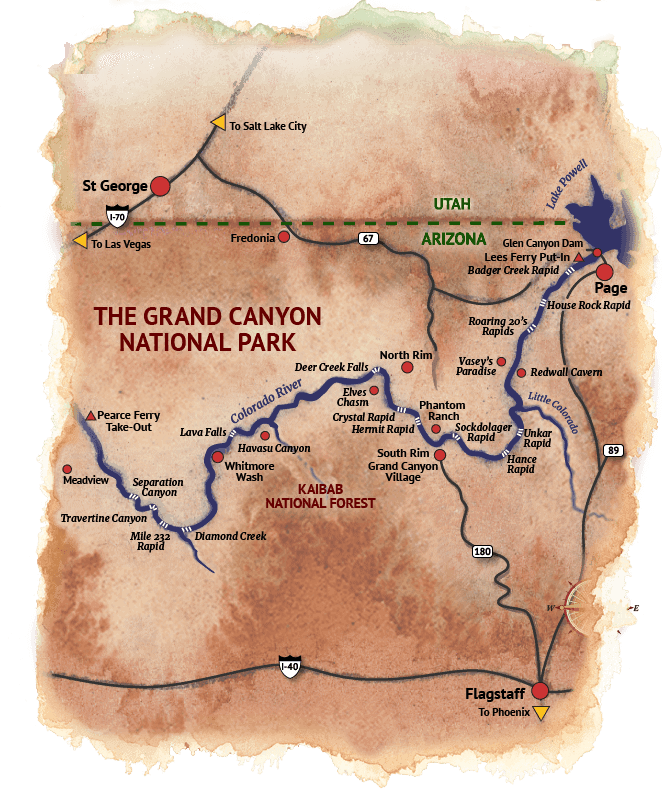
More About Rafting the Grand Canyon
We provide most things you need. Check here for what to bring on your Grand Canyon adventure.
Incredible vacations and experiences with CRATE in the Grand Canyon. View gallery of some of our trip experiences.
Questions such as getting started, reservations, planning, equipment and more on our FAQ Page.
Grand Canyon Rafting trip availability or questions about making rafting trip reservations.
Featured Grand Canyon River Tours
Our classic Grand Canyon River Expedition. It offers ample time to see the sites and side canyons.
Grand Canyon Natural History Special
Emphasis on geology and off-river hiking to unique eco-zones and archaeological sites with professional naturalists.
Spring Hiking & Rafting Special
The focus is on off-river hiking and exploration.
CRATE Rafting Trips Since 1971
Free PDF copy of our Rafting Brochure!
